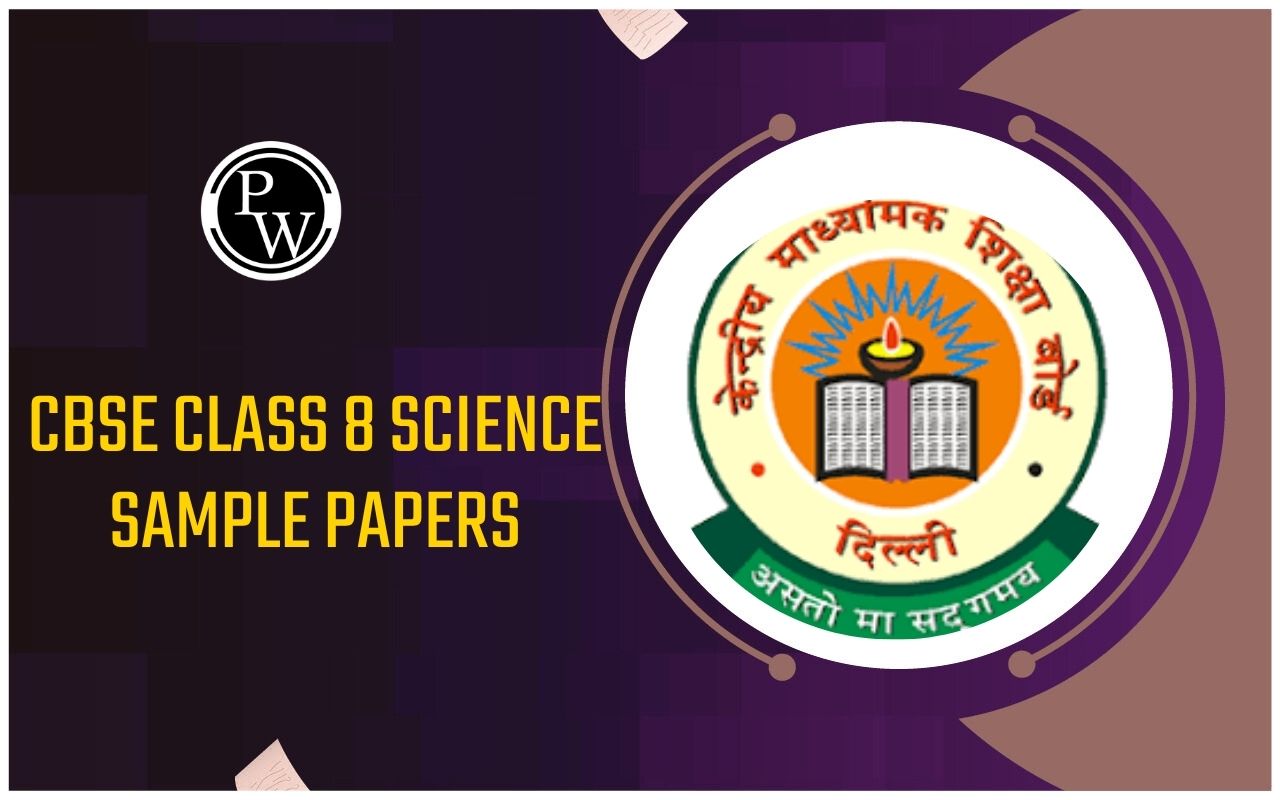

CBSE Class 8 Social Science History Notes Chapter 6: CBSE Class 8 Social Science History Chapter 6 Weavers, Iron Smelters and Factory Owners focuses on the changes faced by traditional artisans and workers in the 19th century.
The chapter explains how British policies hurt local industries like weaving and iron smelting because they couldn’t compete with British-made products. It describes how these policies led to financial problems for skilled workers and the growth of factory-based production. The chapter also discusses the experiences of factory owners and workers in new industries, showing how life changed with industrialization in India.CBSE Class 8 Social Science History Notes Chapter 6 Introduction
These notes for CBSE Class 8 Social Science History Chapter 6 Weavers, Iron Smelters and Factory Owners are prepared by subject experts of Physics Wallah. They provide a detailed overview of how traditional industries in India, such as weaving and iron smelting, were impacted by British policies and industrialization.CBSE Class 8 Social Science History Notes Chapter 6 PDF Download
The PDF link for CBSE Class 8 Social Science History Chapter 6 Weavers, Iron Smelters and Factory Owners is available below. This PDF provides detailed notes on the impact of British industrial policies on traditional Indian industries and the shift from artisanal to factory-based production.CBSE Class 8 Social Science History Notes Chapter 6 Weavers, Iron Smelters and Factory Owners PDF
CBSE Class 8 Social Science History Notes Chapter 6 Weavers, Iron Smelters and Factory Owners
Here, we have provided CBSE Class 8 Social Science History Notes Chapter 6 Weavers, Iron Smelters and Factory Owners to help students prepare more effectively for their exams.Indian Textiles and the World Market
Around 1750, India was the world's leading producer of cotton textiles, known for their superior quality and intricate craftsmanship. These textiles were extensively traded across Southeast Asia, including Java, Sumatra, and Penang, as well as West and Central Asia. European trading companies imported these textiles from India and sold them in European markets.Words tell us histories
European traders first encountered Indian cotton textiles through Arab merchants in Mosul, Iraq. The Portuguese, seeking spices and textiles, introduced Indian cotton cloth to Europe, calling it "calico," a name derived from Calicut. Indian textiles became highly sought after in Western markets, evident in various terms that reflected their popularity. For instance, "chintz," from the Hindi word chhint, described cloth with small, colorful floral designs. "Bandanna," derived from bandhna, referred to brightly colored scarves created by tying and dyeing. The fascination with Indian textiles in England and Europe was fueled by their exquisite designs, fine texture, and affordability.Indian textiles in European markets
By the early eighteenth century, Indian textiles had gained immense popularity in European markets, causing concern among wool and silk producers in England. They lobbied against the import of Indian cotton textiles, leading to the British government passing the Calico Act in 1720, which banned the use of printed cotton fabrics, such as chintz, in England. The goal was to protect and promote the nascent English textile industry by restricting competition from Indian textiles. To counter the influence of Indian designs, English textile industries began imitating and printing these designs on white muslin or plain unbleached cloth. This period also saw significant technological advancements: John Kaye invented the spinning jenny in 1764, and Richard Arkwright developed the steam engine in 1786, revolutionizing cotton textile production. Despite these changes, Indian textiles continued to dominate global trade until the end of the eighteenth century, with European trading companies purchasing Indian cotton and silk textiles in exchange for silver.Who were the weavers?
Weavers were skilled artisans belonging to specific communities known for their weaving expertise, with their knowledge and techniques often passed down through generations. Notable weaving communities included the Tanti weavers of Bengal, the Julahas or Momin weavers of north India, and the Kaikollar and Devangs of south India. The weaving process began with spinning, where tools like the charkha (spinning wheel) and takli (spindle) were used to create thread. After spinning, the thread was woven into cloth by the weaver. For colored textiles, the thread was dyed by specialists called Rangrez. In the case of printed fabrics, the weavers collaborated with expert block printers known as Chhipigars to apply intricate designs.The decline of Indian textiles
The decline of Indian textiles began with the rise of British cotton industries, which significantly impacted Indian textile producers. As British textiles became more dominant in the European and American markets, Indian textiles faced stiff competition. High duties imposed on Indian textiles entering Britain further exacerbated the problem, making it increasingly difficult for Indian textiles to be exported. In Africa, America, and Europe, Indian goods were increasingly replaced by English-made cotton textiles. This shift led to a decline in demand for Indian textiles, causing distress among weavers who petitioned the government for assistance. By the 1830s, British cotton cloth had flooded the Indian market, negatively impacting local weavers and spinners. Despite this, handloom weaving persisted in India for certain types of clothing that machines could not produce. New weaving centers, such as Sholapur in Western India and Madura in South India, emerged in the late nineteenth century. During the Indian national movement, Mahatma Gandhi encouraged the use of hand-spun and handwoven cloth, promoting Khadi as a symbol of nationalism. The charkha, a spinning wheel used for making Khadi, became emblematic of India's struggle for independence and was featured in the Indian National Congress's tricolor flag adopted in 1931.Cotton mills come up
In 1854, Bombay saw the establishment of its first cotton mill, marking the beginning of a significant shift in India's textile industry. By 1900, over 84 mills had been set up in Bombay alone, primarily by Parsi and Gujarati entrepreneurs. The city, already an important port for exporting raw cotton to England and China, became a hub for the burgeoning textile industry. The first cotton mill in Ahmedabad was founded in 1861, and by the late 19th century, mills began emerging in other cities as well. The rise of cotton mills created a demand for labor, leading to the employment of poor peasants, artisans, and agricultural workers. However, the textile factory industry faced significant challenges, including stiff competition from cheap British textiles. Unlike in many countries where governments supported industrialization by imposing heavy duties on imports to protect local industries, India's nascent textile industry struggled under these conditions. A major turning point came during the First World War when textile imports from Britain dropped significantly. Indian factories were then called upon to produce cloth for military supplies, leading to a substantial increase in cotton factory production in India.The sword of Tipu Sultan and Wootz steel
The sword of Tipu Sultan was renowned for its remarkable sharpness and durability, thanks to the special high-carbon steel known as Wootz steel. This steel, produced extensively across South India, was highly prized for its ability to create incredibly sharp edges that could cut through armor effortlessly. The distinctive quality of Wootz steel came from its unique pattern, resembling flowing water, which resulted from tiny carbon crystals embedded within the iron. Wootz steel production involved using smelting furnaces in Mysore, where iron and charcoal were combined in small clay pots. By carefully controlling the temperature, artisans created steel ingots that were then forged into swords. The term "Wootz" is derived from the Kannada word "Ukku," the Telugu "Hukku," and the Tamil and Malayalam "Urukku," all meaning steel. Despite its esteemed reputation, the craft of making Wootz steel faded away by the mid-19th century. With the British conquest of India, the local industry for sword and armor-making declined. The import of iron and steel from England gradually displaced the traditional steel production techniques of Indian craftsmen.Abandoned furnaces in villages
The production of Wootz steel in India relied on a highly specialized iron refining technique, which was widespread until the late 19th century. Iron smelting was a common practice in many regions, including Bihar and Central India, where every district had its own smelters. These furnaces, made from clay and sun-dried bricks, were crucial for producing the renowned Wootz steel. However, by the late 19th century, the craft of iron smelting began to decline. One significant factor was the British government's restrictions on access to reserved forests, which were essential for obtaining the necessary resources like wood for fuel. Although the government did allow some access, the high taxes imposed on the use of these forests made it increasingly difficult for local smelters to operate. As a result, by the early 20th century, the local iron and steel industries faced intense competition from imported products, leading to the abandonment of traditional smelting practices and a decline in local craftsmanship.Iron and steel factories come up in India
In 1904, Charles Weld, an American geologist, and Dorabji Tata, the eldest son of Jamsetji Tata, embarked on a mission to find iron ore deposits in Chhattisgarh for setting up a modern iron and steel plant in India. After extensive exploration, they discovered the Rajhara Hills, which contained high-quality iron ore, although the region lacked nearby water sources. With the assistance of the Agarias, who helped locate a viable source of iron ore, they cleared a large area of forest along the banks of the Subarnarekha River to establish both the Tata Iron and Steel Company (TISCO) and an industrial township, Jamshedpur. TISCO began steel production in 1912. Prior to TISCO's establishment, India relied on imported steel from Britain. However, with the outbreak of World War I in 1914, British steel was diverted to meet wartime demands in Europe, creating an urgent need for steel production in India. TISCO stepped up to produce essential war materials like shells and carriage wheels, eventually becoming the largest steel industry within the British Empire. The rise of TISCO marked a significant shift in the iron and steel industry, driven by the decline in British imports and a growing domestic market for industrial goods. This period also saw the strengthening of the nationalist movement and the industrial class, which increasingly demanded government protection and support for local industries.Benefits of CBSE Class 8 Social Science History Notes Chapter 6
- Comprehensive Understanding : The notes provide a thorough overview of the key concepts related to weavers, iron smelters and factory owners helping students grasp the historical significance of these industries in India.
- Contextual Insights : By covering the decline of traditional industries and the rise of modern factories, the notes offer insights into the economic and social changes that occurred during the colonial period.
- Exam Preparation : The structured format of the notes aids in focused revision, making it easier for students to prepare for exams. Key points, dates, and events are highlighted for quick reference.
- Detailed Descriptions : The notes include detailed descriptions of processes like weaving, iron smelting, and the impact of British industrial policies, which can help in answering descriptive questions in exams.
- Understanding Historical Impact : Students can better understand how historical events, such as the introduction of cotton mills and the decline of Wootz steel, shaped India’s industrial landscape and influenced its economy.
- Clarity on Key Figures : The notes provide information about important individuals and communities, such as the Tanti weavers and Dorabji Tata, helping students remember key figures and their contributions.
- Preparation for Objective Questions : The notes cover essential facts and figures that are likely to be included in multiple-choice or short-answer questions, facilitating effective preparation.
- Linking Historical and Modern Context : The notes help students connect historical developments with their impact on modern India, providing a broader understanding of historical progress and its relevance today.
CBSE Class 8 Social Science History Notes Chapter 6 FAQs
How was the process of spinning and weaving carried out in traditional Indian textile production?
Spinning was the first stage, where threads were spun using a charkha and rolled on a takli. After spinning, the thread was woven into cloth by weavers. For colored textiles, the thread was dyed by dyers known as Rangrez. For printed cloth, specialist block printers known as Chhipigars were involved.
When and where were the first cotton mills established in India?
The first cotton mill was established in Bombay (now Mumbai) in 1854. By 1900, over 84 mills had been set up in Bombay by Parsi and Gujarati businessmen. The first mill in Ahmedabad was started in 1861.
What was Wootz steel and why was it significant?
Wootz steel was a high-carbon steel produced in South India, known for its sharp edge and flowing water pattern. It was used to make swords with exceptionally hard and sharp edges. The process of making Wootz steel involved mixing iron with charcoal and controlling temperatures in smelting furnaces.
When and how did modern iron and steel factories begin in India
Modern iron and steel factories in India began with the establishment of the Tata Iron and Steel Company (TISCO) in Jamshedpur in 1912. The initiative was led by Charles Weld and Dorabji Tata, who identified iron ore deposits in Chhattisgarh and set up the factory to produce steel.
How did the First World War impact the Indian iron and steel industry?
The First World War led to a significant increase in demand for steel, as British steel was needed for military supplies. Indian factories like TISCO were called upon to produce steel for war-related purposes, leading to a surge in industrial production.
Talk to a counsellorHave doubts? Our support team will be happy to assist you!

Check out these Related Articles
Free Learning Resources
PW Books
Notes (Class 10-12)
PW Study Materials
Notes (Class 6-9)
Ncert Solutions
Govt Exams
Class 6th to 12th Online Courses
Govt Job Exams Courses
UPSC Coaching
Defence Exam Coaching
Gate Exam Coaching
Other Exams
Know about Physics Wallah
Physics Wallah is an Indian edtech platform that provides accessible & comprehensive learning experiences to students from Class 6th to postgraduate level. We also provide extensive NCERT solutions, sample paper, NEET, JEE Mains, BITSAT previous year papers & more such resources to students. Physics Wallah also caters to over 3.5 million registered students and over 78 lakh+ Youtube subscribers with 4.8 rating on its app.
We Stand Out because
We provide students with intensive courses with India’s qualified & experienced faculties & mentors. PW strives to make the learning experience comprehensive and accessible for students of all sections of society. We believe in empowering every single student who couldn't dream of a good career in engineering and medical field earlier.
Our Key Focus Areas
Physics Wallah's main focus is to make the learning experience as economical as possible for all students. With our affordable courses like Lakshya, Udaan and Arjuna and many others, we have been able to provide a platform for lakhs of aspirants. From providing Chemistry, Maths, Physics formula to giving e-books of eminent authors like RD Sharma, RS Aggarwal and Lakhmir Singh, PW focuses on every single student's need for preparation.
What Makes Us Different
Physics Wallah strives to develop a comprehensive pedagogical structure for students, where they get a state-of-the-art learning experience with study material and resources. Apart from catering students preparing for JEE Mains and NEET, PW also provides study material for each state board like Uttar Pradesh, Bihar, and others
Copyright © 2025 Physicswallah Limited All rights reserved.
Get App










